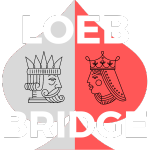Fast Arrival is a valuable bidding principle, but it is often misused. Fast Arrival applies when partner has limited their hand. A jump to game (arriving quickly) denies slam interest. Slowly arriving at game shows extra values and slam interest. When partner opens 1NT or 2NT, they have limited their hand. So Fast Arrival applies. So responder can use Slow Arrival to make a slam try. Using a Jacoby Transfer and then bidding 4 of their major is a Slow Arrival slam try, showing a 6+ card major and enough strength to invite slam.
If responder has a 6+ card major and game forcing values with no slam interest, responder shouldn't use a Jacoby Transfer. Responder uses a Texas Transfer, Fast Arrival, to play in 4 of their major. Opener must bid 4 of responder's major even if they have a maximum notrump opener for responder's major.
Fast Arrival doesn't apply when partner has not limited their hand. There are several reasons why Fast Arrival shouldn't be used in a 2/1 Game Force auction where your partner's hand is unlimited.
- Jumping to game may prevent you from finding the best strain. On an auction like 1♠ - Pass - 2♥ - Pass, a jump to 4♥ leaves no room to judge whether spades or notrump will play better than 4♥, Responder may have 3-card spade support and a weak 5-card heart suit. 4♠ may be the safest contract. Responder may have good stoppers in the minors and a weak heart suit. 3NT may score better than 4♥. If hearts break badly, 4♥ may be going down when 3NT is making.
- Jumping to game because you have a minimum doesn't mean you don't have a slam. Your partner may have a strong hand and want to look for slam even opposite a minimum opener. A Fast Arrival jump to game consumes valuable bidding space which could be used to assess slam interest and determine if your partnership has 2 quick losers in a side suit. It is common to use control bids to show 1st or 2nd round control of a side suit and show slam interest. If neither partner has control of a side suit, you want to stop in game. A Fast Arrival auction like 1♠ - Pass - 2♥ - Pass; 4♥ leaves no room show controls below game. Responder cannot make a slam try without risking the 5-level. When partners makes the wrong guess, the cost is a missed slam or going down at the 5-level.
Slams aren't always about point. Often, it is a question of how well the hands fit together. You might open 1♠ with a 12 HCP hand like ♠AK873 ♥Q42 ♦K952 ♣2.
| North | East | South | West |
| 1♠ | Pass | 2♥ | Pass |
| 3♥ | Pass | ? |
When your partner responds with a 2♥ 2/1 Game Force, as shown above, Fast Arrival doesn't apply because responder has not limited their hand. Opener should rebid 3♥ to show a heart fit. This doesn't show or deny extra values. It leaves room for responder use a Control Bid to show slam interest and 1st or 2nd round control of a side suit. Now responder (South)with a hand like ♠Q5 ♥AK9853 ♦A8 ♣865 can show slam interest and control of diamonds below game with a 4♦ Control Bid. South's 4♦ Control Bid denies a club control. This makes North's club singleton very valuable. North can reasonably cooperate with South's slam try, and reach an excellent 6♥ slam.
This illustrates why Fast Arrival doesn't apply when your partner has limited their hand. If South made a Fast Arrival jump to 4♥ to deny holding extra values as shown below, South would need to guess whether to risk a 5♦ control bid.
| North | East | South | West |
| 1♠ | Pass | 2♥ | Pass |
| 4♥ | Pass | ? |
South's 3 quick club losers makes the 5-level risky. South would likely pass, missing an excellent 6♥ slam. If you held a hand like ♠AK873 ♥Q42 ♦K9 ♣972, a 5♦ control bid by partner would lead to 5♥ down 1. The biggest flaw with Fast Arrival opposite an unlimited hand is that it preempts the auction and forces your partner to commit to the 5-level to look for slam. It is far better to use the 4-level to show slam interest and controls.
Using a jump to game to tell your partner you don't have extra values isn't worth the space it consumes. It is easy to distinguish hands with extra values from minimum hands. With extra values, you can make a slam try. With a minimum hand, you will not make a slam try. Advanced players can use the Non-Serious 3NT slam try to differentiate a serious slam try from the willingness to cooperate with a slam try.
Jump bids in 2/1 Game Force auctions should have a specific meaning to justify the room they consume. A jump shift is best played as a splinter bid, showing support for partner's suit and shortness (a singleton or void in the bid suit). What about a jump raise of partner's suit? The easiest approach is not to make the jump raise. For partnership's with good memories, you could use Picture Bids to show good honor holding in your suit and in partner's suit and deny a 1st or 2nd round control in a side suit. For more on Picture Bids, see Andrew's "Fast Arrival or Picture Jumps?" article.




